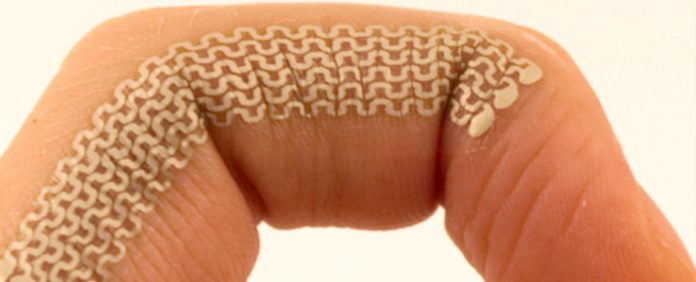You have probably seen a person or two with a temporary tattoo and thought ‘that looks cool.’ It turns out, temporary tattoos have just become cooler.
Researchers from the University of Saarland, Germany, in conjunction with Google, have now come up with a way to stick circuits onto your hands to control your smartphone, and they are calling it ‘SkinMarks.’
The researchers told the New Scientist journal that SkinMarks are small printed circuits with microcontrollers mounted onto decal paper much like the paper used to make temporary tattoos.
“We made SkinMarks by analyzing the ink employed in temporary tattoos as well as the thickness and flexibility of the decal paper,” the team wrote. Analysis of the ink in temp tattoos allowed the group of scientists to mimic the ink while creating the circuits so that the circuits could be printed on paper. The decal paper used in making the SkinMarks is ultra-thin enough and flexible enough to enable the microcontroller to respond to a command when the hand is touched, squeezed, bent or stretched. “The fact that the skin is elastic made it convenient to find ways in which commands could be issued by the SkinMarks microcontroller,” said Jurgen Steimle, a member of the research team.
The team tested the SkinMarks on various features of a person’s hand. They tried placing it on the bumps, bends, and curves of a hand to see if the microcontroller could command a smartphone. The skin-based controller was put on wrinkles to find out the effects the crevasses had on smartphone control. The team went even further ahead and modified the SkinMarks to fit visible skin marks like the moles and dips of the hand. Finally, the researchers tested SkinMarks on wearable hand accessories like watches, and if you can take their word for it, it works anywhere!
Just imagine that. In the future, you could turn up the volume of your smartphone by brushing one finger over another or call your mother by making a fist or splaying your hand. You would not have to press a button or smudge your precious screens, a simple cock of a finger or touch on a wrinkle could do the job just as well.
The research group did not stop at just creating the SkinMark wearable interface either. The team added features such as electroluminescence to make the microcontroller more attractive and distinctive to prospective users. The vibrant colors the SkinMarks microcontroller comes with make it not just practical, but cool to use as well.
SkinMarks Prospects
Though SkinMarks is the first smartphone microcontroller, it is not the first stick-on circuit ever made. Former models of such circuits are used in the medical field to monitor heart rates and chronotypes. SkinMarks advantage over these previous models is that is simpler in design thus will be easier to create, and it will take less time to do so. Similarly, the SkinMarks model is made of a more accessible material that may end up making it more affordable to consumers.
“We have proven that the technology is feasible, now we just have to prove it can be practical,” concluded Martin Weigel, the scientist in charge of the research study.




